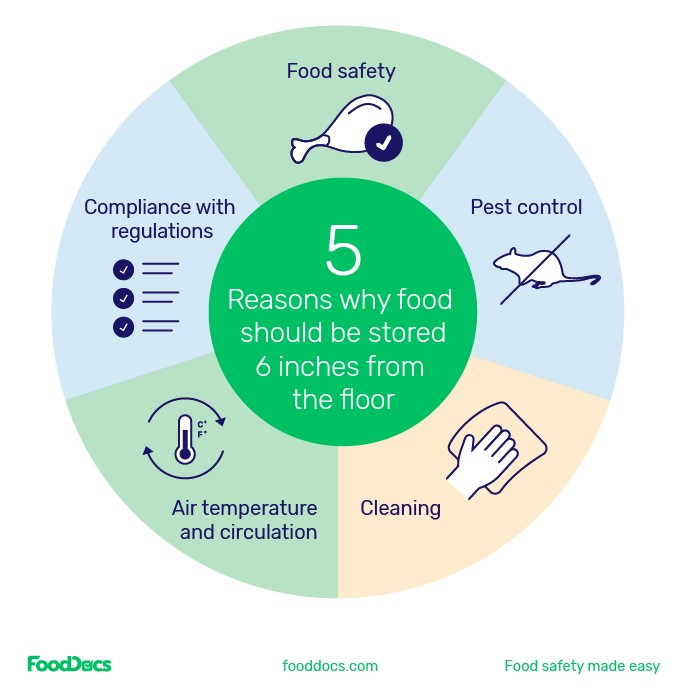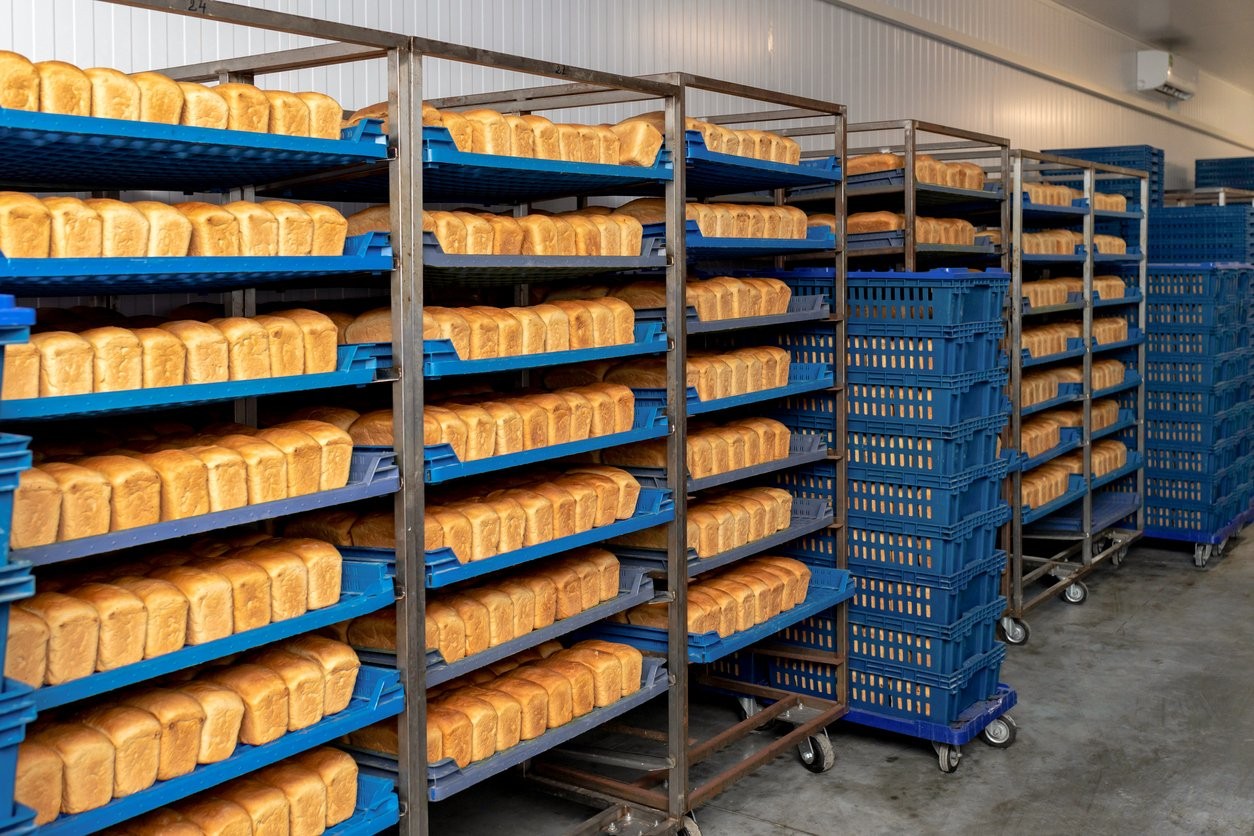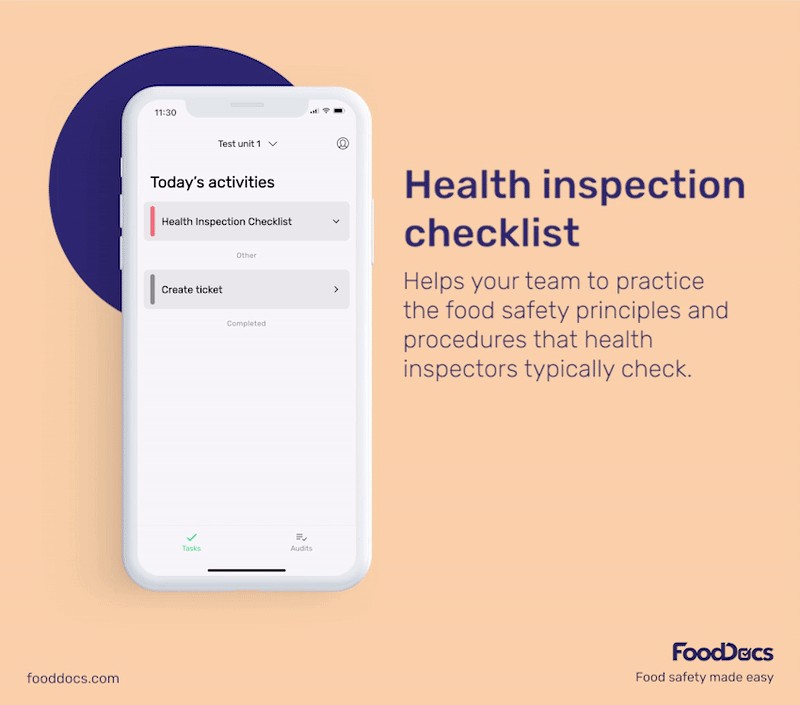Proper food storage is critical for maintaining safety and preventing contamination in any food-related business. An essential aspect of this is understanding how many inches food should be stored off the ground. FOODS.EDU.VN provides comprehensive guidelines and best practices for food storage, ensuring your business complies with safety regulations and protects public health. Discover effective strategies and expert advice on achieving optimal food storage conditions and minimizing the risk of foodborne illnesses.
Table of Contents
- Understanding the Importance of Elevated Food Storage
- The Recommended Height: How Many Inches is Ideal?
- Alternative Methods for Elevated Food Storage Solutions
- Why Elevate Food? The Key Benefits Explained
- Cross-Contamination Risks: Storage Practices to Avoid
- Proper Storage for Dried Foods: Best Practices
- Distance from Walls and Floors: Optimizing Storage
- Flooring Materials: Choosing Safe Options
- Leveraging Technology: Ensuring Compliance with FOODS.EDU.VN
- Frequently Asked Questions (FAQs) About Food Storage Heights
1. Understanding the Importance of Elevated Food Storage
Elevated food storage is more than just a recommendation; it’s a fundamental element of food safety. Storing food correctly helps prevent contamination, reduces the risk of pest infestations, and promotes better air circulation, all of which contribute to a safer and healthier environment for both staff and consumers. FOODS.EDU.VN emphasizes that understanding and implementing these practices is crucial for any food business committed to maintaining high standards of hygiene and safety. This practice is an important part of the larger effort to manage foodborne disease and ensure food product integrity.
2. The Recommended Height: How Many Inches is Ideal?
The golden rule in the food industry is to store food at least 6 inches (15 centimeters) off the floor. This guideline is widely recognized as an effective buffer against potential contaminants that may be present on the floor, such as dust, pests, and cleaning chemicals. According to FOODS.EDU.VN, maintaining this distance helps prevent direct contact with these contaminants, significantly reducing the risk of foodborne illnesses. While some regions might have specific exceptions or variations, the 6-inch rule provides a solid foundation for safe food storage practices. This minimum clearance also aids in easy floor maintenance, preventing allergen cross-contact, and supports overall hygiene in food handling areas.
3. Alternative Methods for Elevated Food Storage Solutions
For businesses with limited space or unique storage challenges, several alternative methods can effectively elevate food off the ground. FOODS.EDU.VN highlights that options like food-grade pallets, dollies, and risers can serve as acceptable substitutes for permanent shelves, provided they are kept clean and sanitary. Other alternatives include using wall-mounted shelving, mobile carts with storage bays, and wire racks. The key is to choose a solution that is sturdy, easy to clean, and capable of maintaining the required distance from the floor, ensuring food safety even in constrained environments.
- Install wall-mounted shelving to maximize vertical space and keep food off the floor.
- Use mobile carts for easy relocation and cleaning underneath.
- Employ wire racks with multiple tiers to store various food types.
- Utilize sanitized plastic pallets to elevate larger quantities of food.
- Organize ingredients in clean, dry, insect-proof containers.
- Hang lightweight items using hooks or pegboards to save floor space.
- Utilize a large refrigerated space with different food compartments.
- Immediately store frozen foods in plastic freezer containers.
4. Why Elevate Food? The Key Benefits Explained
Elevating food off the floor offers several critical benefits that directly impact food safety and hygiene. FOODS.EDU.VN emphasizes that these advantages include preventing contamination from floor-level hazards, improving pest control, facilitating thorough cleaning, and promoting better air circulation. By keeping food items off the ground, businesses can significantly reduce the risk of foodborne illnesses, maintain a cleaner and more sanitary environment, and comply with food safety regulations, ensuring the health and safety of their customers.
- Food Safety: Floors can harbor dust, pests, pathogens, and cleaning chemicals.
- Pest Control: Elevating food makes it harder for pests to access and contaminate ingredients.
- Cleaning: Elevated storage allows for easy and thorough cleaning underneath.
- Air Temperature and Circulation: Proper airflow prevents moisture buildup and mold growth.
- Regulatory Compliance: Storing food off the floor is a key part of food safety guidelines.
5. Cross-Contamination Risks: Storage Practices to Avoid
Improper storage practices can lead to cross-contamination, posing a significant risk of foodborne illnesses. FOODS.EDU.VN warns against storing fresh and cooked foods together, using damaged packaging, and placing food directly into storage without proper protection. Overcrowding storage areas, neglecting cleaning and sanitation, and failing to monitor temperature fluctuations are also critical mistakes to avoid. By understanding and preventing these poor storage habits, businesses can maintain a safe and hygienic environment, protecting their customers from potential health hazards.
Poor Food Storage Practices to Avoid
| Practice | Risk | Solution |
|---|---|---|
| Storing fresh and cooked foods together | Raw juices contaminating cooked foods | Store cooked foods on top shelves, raw meats lower down |
| Using damaged packaging | Contamination and spoilage | Use proper, intact packaging |
| Placing food without packaging | Direct exposure to contaminants | Use secondary or original packaging |
| Overcrowding storage areas | Cross-contamination due to lack of space | Leave adequate space between different food types |
| Lack of cleaning and sanitation | Bacterial growth and pest attraction | Regularly clean and sanitize storage areas |
| Failing to monitor temperature fluctuations | Food spoilage and bacterial growth | Monitor and control storage temperatures |
| Storing chemicals near food | Chemical contamination of food | Store chemicals in a separate, dedicated area |
| Improper inventory rotation (FIFO) | Expired products contaminating fresh ones | Use the First In, First Out (FIFO) method |
| Insufficient monitoring procedures | Inadequate oversight of storage conditions | Implement thorough monitoring procedures |
| Storing allergenic ingredients with other foods | Cross-contact of allergens | Store allergens in sealed, labeled containers away from other foods |
| Lack of Elevation | Exposure to floor contaminants | Ensure all food is stored at least 6 inches off the ground using shelves, pallets, or other supports |




6. Proper Storage for Dried Foods: Best Practices
The proper storage of dry goods is essential for preventing pest infestations and maintaining food quality. FOODS.EDU.VN advises maintaining optimal storage conditions, including a cool, dry environment with good ventilation. Using airtight containers, inspecting packages for damage, and regularly cleaning the storage area are also crucial steps. By following these best practices, businesses can protect their dry goods from pests and spoilage, ensuring a longer shelf life and consistent quality.
How to Properly Store Dry Goods
| Step | Description |
|---|---|
| Ensure Optimal Storage Conditions | Maintain a temperature of 50–70 °F (10–21 °C) and 50% relative humidity. |
| Optimize for Ventilation and Spacing | Ensure adequate airflow, keeping shelves away from walls. |
| Use Proper Containers | Store loose dry foods in airtight containers. |
| Inspect Packages | Check for signs of pest infestation upon delivery. |
| Regular Cleaning and Sanitation | Schedule deep cleaning routines to prevent dust and pest buildup. |
| Practice FIFO | Use the first-in, first-out system when restocking. |
| Avoid Storing High-Moisture Foods | Separate dry goods from high-moisture foods. |
| Use Food-Safe Pest Deterrents | Employ natural deterrents like bay leaves or cinnamon sticks. |
7. Distance from Walls and Floors: Optimizing Storage
In addition to elevating food off the floor, maintaining adequate space between food items, walls, and ceilings is crucial for proper air circulation and pest control. FOODS.EDU.VN recommends storing food at least 6 inches (15 centimeters) above the floor and no less than 18 inches (46 centimeters) away from walls and ceilings. This spacing allows for thorough inspections and cleaning, prevents condensation, and ensures that the storage area remains hygienic and safe.
8. Flooring Materials: Choosing Safe Options
Selecting the right flooring material is a critical decision for any food establishment. FOODS.EDU.VN emphasizes that flooring must be smooth, non-absorbent, washable, and made of non-toxic materials. Resin-based floors are often preferred over concrete for their ease of cleaning and durability. Factors such as cleanability, moisture resistance, durability, slip resistance, chemical resistance, and pest control must be considered to ensure the safety and hygiene of the food storage area.
Key Considerations for Flooring Material
| Factor | Description | Suitable Materials |
|---|---|---|
| Cleanability | Easy to clean and sanitize, without gaps that collect dirt. | Epoxy coating, stainless steel, ceramic tiles |
| Moisture Resistance | Non-absorbent to prevent mold and bacteria growth. | Sealed concrete, epoxy resin, quarry or ceramic tiles |
| Durability | Able to withstand heavy traffic and equipment movement. | Materials requiring low maintenance |
| Slip Resistance | Smooth with anti-slip coatings to prevent accidents. | Materials with anti-slip coatings |
| Chemical Resistance | Able to withstand sanitizers without damage. | Materials resistant to chemical reactions |
| Pest Control | Tightly sealed to prevent vermin infestation. | Vinyl, epoxy installed with coved bases |
9. Leveraging Technology: Ensuring Compliance with FOODS.EDU.VN
Technology plays a vital role in ensuring compliance with food storage regulations and best practices. FOODS.EDU.VN highlights the benefits of using advanced Food Safety Management Systems to monitor and manage food storage conditions effectively. These systems offer features such as automated monitoring checklists, smart notifications, real-time dashboards, and cloud storage, enabling businesses to maintain high standards of food safety and hygiene with ease.
10. Frequently Asked Questions (FAQs) About Food Storage Heights
Q1: Why is it important to store food off the floor?
Storing food off the floor helps prevent contamination from dust, pests, cleaning chemicals, and other hazards.
Q2: What is the recommended height for storing food off the floor?
The general recommendation is to store food at least 6 inches (15 centimeters) off the floor.
Q3: Are there any exceptions to the 6-inch rule?
Some local health codes may allow exceptions for certain packaged goods if the floor is clean and the containers are waterproof.
Q4: What are some alternative methods for elevating food off the floor?
Alternatives include using food-grade pallets, dollies, risers, wall-mounted shelving, and mobile carts.
Q5: How does elevated food storage help with pest control?
Elevating food makes it harder for pests like rodents and insects to access and contaminate ingredients.
Q6: What kind of flooring is best for food storage areas?
Flooring should be smooth, non-absorbent, washable, and made of non-toxic materials like epoxy or sealed concrete.
Q7: How far should food be stored away from walls?
It is recommended to store food at least 18 inches (46 centimeters) away from walls to allow for cleaning and air circulation.
Q8: What is FIFO and why is it important for food storage?
FIFO (First In, First Out) is a method of inventory rotation that ensures older stock is used before newer stock, preventing spoilage.
Q9: How can technology help with food storage compliance?
Food Safety Management Systems offer automated monitoring, smart notifications, and real-time dashboards to help maintain compliance.
Q10: Where can I find more detailed information and guidelines on food storage?
Visit FOODS.EDU.VN for comprehensive resources, guidelines, and best practices on food storage and safety.
Discover more valuable insights and detailed guidelines on food storage practices at FOODS.EDU.VN. Enhance your knowledge and skills to ensure food safety and hygiene in your establishment. Visit us today at foods.edu.vn or contact us at 1946 Campus Dr, Hyde Park, NY 12538, United States, or via WhatsApp at +1 845-452-9600.